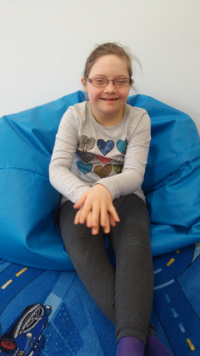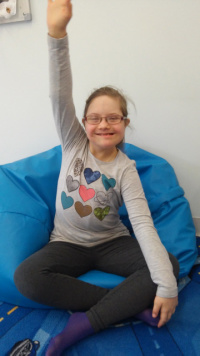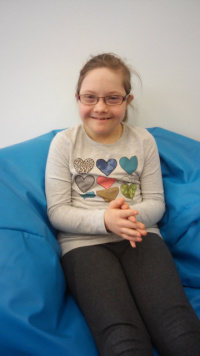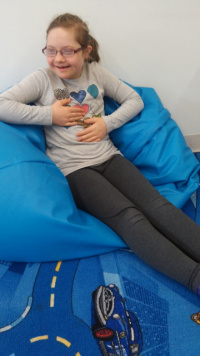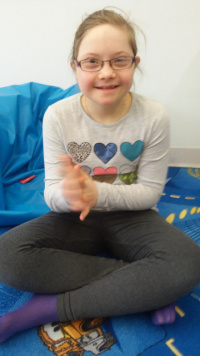- Activity Programs: "Body Awareness, Contact and Communication" – Marianna and Christopher Knill
- "Touch and Communication" – Christopher Knill
Activity Programs can be used at work:
-with healthy children;
-with children, adolescents and adults with different levels of intellectual development;
-with children, adolescents and adults with various types of physical disabilities;
-with a child with a motor disability;
-with a child with impaired sight or hearing
-with a deaf – blind child;
-with an autistic child
-with a child with a psychotic disorder.
The aim of the proposed Activity Programs is to develop social contacts, encourage movement and play, and develop the child's communication skills with other people. Activity programs are based on the child's cognition and experience of different types of activities, such as rocking, waving arms, bending and stretching his arms, rubbing his hands, clenching and opening his hand (etc.) and adapting these movements to the accompaniment of music from the tape. According to the authors, the development of contact and communication is much more important than the movement itself and its execution. Activity can be carried out in different ways, depending on the specific needs of the child and his motor capabilities.
All movements (activities) of the child are accompanied by a specially developed musical accompaniment with a straight melodic line and an easy-to-reproduce rhythm. It is supported by the voice of the lecturer (the lector gives further commands). All this is to focus the child's attention on selected activities. Thanks to listening to a special tone (signature), at the beginning and end of each program, the child gradually learns to recognize the situation, and this prepares to connect it
with a specific activity.
The Authors of the Programs propose four Programs, an Introductory Program and a Special Program.
Introductory Program (approx. 8 minutes; Rocking – Waving hands – Clapping – stroking the head – stroking the belly – Relaxation). The Introductory Program allows you to determine whether a child is able to concentrate enough attention, whether he or she can establish and maintain contact to move on to Programs I and II.This program is especially recommended in working with young children, children with autism and children with psychotic disorders.
Program I (approx. 15 minutes; Rocking – Waving arms – Bending and stretching hands – Rubbing hands – Clenching and opening hands – Finger movements – Clapping – Stroking the head – stroking the cheeks – stroking elbows – stroking the belly – Rolling over – Relaxation). Program I requires the involvement of the upper body.
Program II (approx. 15 minutes; Rocking – Clapping – Belly stroking – Stroking thighs – Knee stroking – stroking toes – Rowing – Rubbing feet – Moving toes – Leg movement – Lying on your back – Turning from back to side – Turning from back to stomach – Relaxation). Program II requires the involvement of the lower parts of the body.
Program III (approx. 20 minutes; Lying on your stomach – Lying on your back – Turning from back to stomach – Turning from belly to back – Moving your legs – Crawling on your stomach – Crawling – Kneeling and walking on your knees – Falling from a kneeling position – Repelling and attracting – Relaxation). Program III requires increased attention, mobility, coordination but also much greater social awareness.
Program IV (approx. 20 minutes; Lying on your stomach – Lying on your stomach and blinking your eyes – Lying on your back with your arms around the back of your neck – Moving your legs (cycling) – Bouncing on your bottom – Spinning in a circle – Sliding on your bottom – Getting up and standing still – Raising your arms – Raising an arm and leg – Standing in front of someone – Running up to and running away – Walking fast
and gently – Walking slowly and hard – Walking quietly – Looking for a partner – Repelling
and attraction – Dance). Program IV requires a higher level of body awareness, better self-control, concentration, conceptual understanding, and socialization.
Special Program (approx. 25 minutes; Rocking – Waving hands – Rubbing hands – Clenching
and opening the hand – Clapping – Stroking the cheeks – Stroking the belly – Stroking the thighs – Leg movements – Rolling over – Relaxation). The program is adapted to the needs of children with physical disabilities.
The programs end with a short relaxation (only Program IV ends with dance – any movement expression with the participation of a partner).
The numbers of individual Programs do not indicate the order in which they are entered. If the child masters one of the Programs well, he can move on to the next one (with an increased degree of difficulty). Two alternative Programs may be used simultaneously. No special equipment is needed to implement the Programs. It is advisable for the child to have their own mat (blanket, mattress) to accommodate two people (e.g. a child and a parent). Another indispensable prop is a CD player for playing recordings attached to the Program.
Bibliography:
1.Knill Ch., (1995). Touch and Communication, ed. CMPPP, Warsaw
2.Knill M., Knill Ch., (1995). Activity Programs, Body Awareness, Contact and Communication, ed. CMPPP, Warsaw

